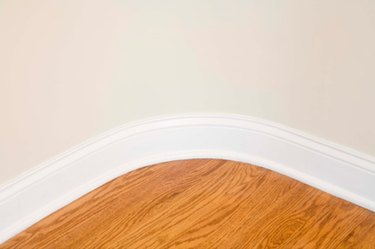
Flooring in a home is an important investment because the continual wear and tear, dirt build-up and frequent daily use can make new floors look old and dingy in a short amount of time. Unsurprisingly, the color of the wood flooring that you choose can have an impact on the appearance of dust and dirt. Generally, light colored wood floors tend to hide dust better than dark wood floors.
Pine
Video of the Day
The lightest variety of wood flooring generally falls into the pine category. A few white-washed wood flooring options are slightly lighter, but they tend to show dirt and grime more readily. As a result, pine is one of the best choices for hiding dust without showing large amounts of dirt. Due to the soft grain texture and pale golden color of pine, dust and light amounts of dirt are easily camouflaged in the flooring. Pine has a fine grain that works to hide dust bunnies without making them stand out against the flooring. Pine is also a sturdy wood that holds up well in high traffic areas.
Video of the Day
Oak
Oak is one of the most widely accepted options for wood floors. Due to the warmness in oak tones and the soft brown grain lines, oak tends to hide dust and dirt better than most wood colors. When purchasing wood flooring, you will notice that oak floors come in a variety of colors ranging from pale soft yellows to deep golden browns. Most shades of oak flooring work well to hide the appearance of dust and dirt. Generally, the lighter the shade of oak, the better it will camouflage any dust particles. Oak is durable and is relatively easy to clean and maintain.
Maple
Maple is often overlooked when choosing wood flooring. Due to its slight orange appearance, it can be quickly disregarded as a wood flooring option. However, maple wood flooring in paler peach hues can be an attractive and dust-hiding alternative to oak and pine. Due to its smooth texture, faded grain tones and variegated coloring, it works well to hide the appearance of dust. Some maple wood tones almost look like faded marble because of the variations in color in each strip of wood. As a result, the smooth pattern hides dust and dirt that collects in the corners and edges of a room.